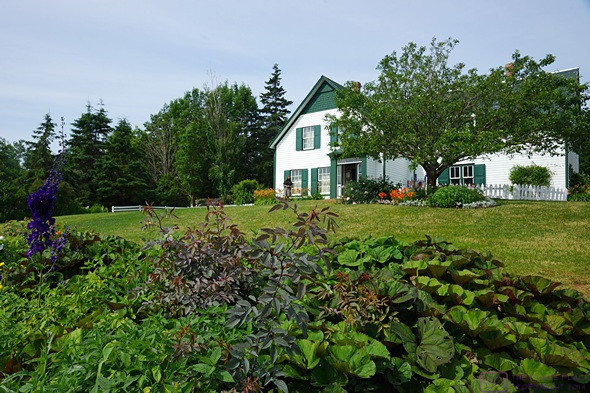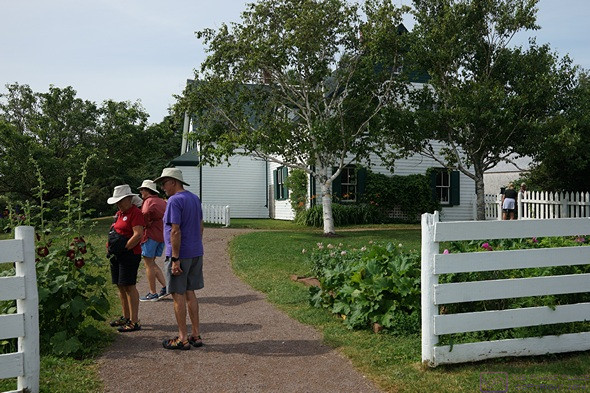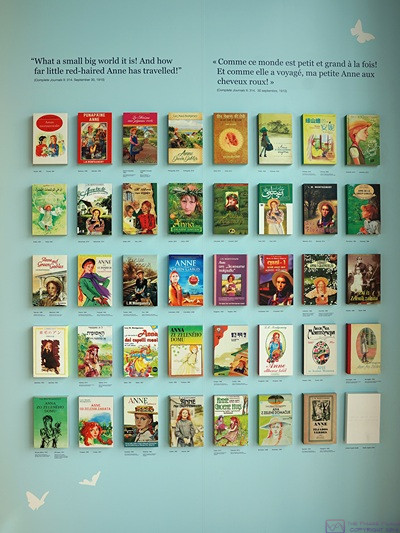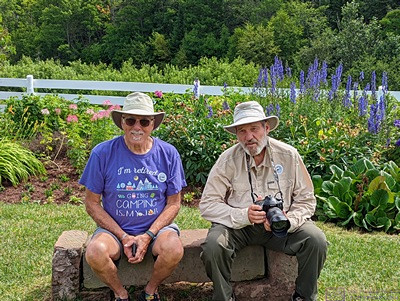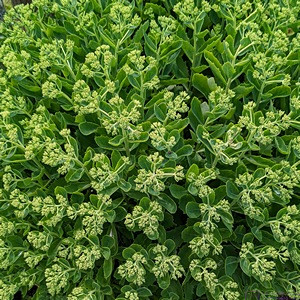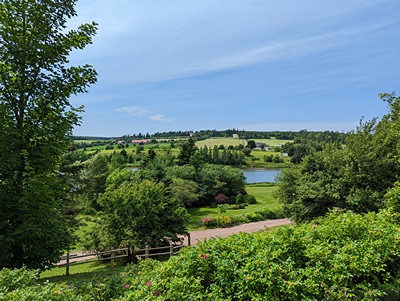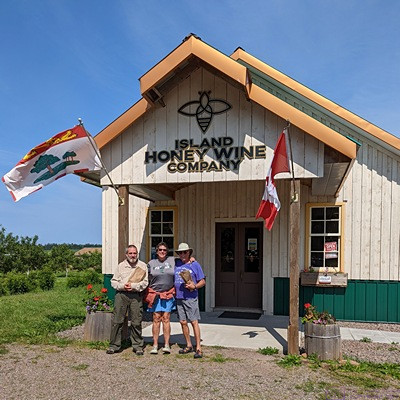SATURDAY 16 July
I was up early enough to put the finishing touches on the blog post for the last two days. I used the new Wi-Fi access code I got yesterday, and it worked, so I was able to upload the blog without having to hotspot my Google Pixel 6 Pro smartphone. The cellular signal here is strong, but I am limited to 500 MB per day, which I try to keep in reserve for use while driving, hiking, or critical/sensitive online activities. I decided to just leave my computer on with the Wi-Fi connected and see how that played out.
We tried to Facetime with our son and two youngest grand-daughters at 9:30 AM. The Wi-Fi here in the park is very good, but they must be speed limiting certain services, such as video streaming. We got to see the grand-daughters for a few minutes but ended up just talking on the phone. One of the things I was pleased to learn was that Madeline (9-1/2 years old) has started reading this blog, beginning with the first post for this trip. In day camp last week, Sadie (3-1/2 years old) learned about why dinosaurs vanished due to an asteroid hitting the earth. Once the call was wrapped up, our son was taking the girls with him to check on our house and take a few photos of the barn/workshop project, which he sent along later.
With a nice day on tap, weatherwise, Nancy and Paul picked us up at 9:45 AM to go explore some features of the island. Our first stop was the Anne of Green Gables Heritage Center unit of Prince Edward Island National Park (Parks Canada). We started in the Exhibit area and read most of the information placards about the life and literary work of Lucy Maud Montgomery, the author of the novel Anne of Green Gables, about whom we previously knew very little. We were really only familiar with the Anne of Green Gables story from the PBS series based on the novel and did not know that she wrote three more novels about Anne and the town of Avonlea. We were impressed to find out that over her lifetime she wrote and had published 20 novels, 500 short stories and 500 poems, with hundreds of the short stories and poems being published prior to the Anne of Green Gables novel, which was her first.
We knew that the story was inspired by her experience growing up and living on Prince Edward Island. The house that Anne goes to live in is based on an actual house that belonged to her aunt and uncle (a brother and sister) and where Montgomery spent a lot of time and walked in the surrounding woods. The house and woods still exist, and are what of the Heritage Center unit protects and preserves. The house is restored to be as similar as possible to what it was like in the late 19th century when Montgomery was a young girl. We also learned the Avonlea was inspired by the town of Cavendish, where the house/park is located, as it existed then.
The novel has been in continuous print since it was first published in 1908, and the Exhibits area displays copies in 40 different languages. Based on the covers, it was interesting to see how Anne’s appearance was changed to match cultural norms for each language/country, and we wondered if the descriptions of Anne and Avonlea in each translation were also different? And if so, how different the story must be?
We timed our arrival well as the place was not crowded. We admired the gardens around the house and then walked through on the self-guided tour. It was very much of the era. Most rooms were small, heavily wallpapered, with dark furniture pieces. All four of us hiked the 1.2 Km Haunted Woods trail. Linda and I then hiked the 0.9 Km Lover’s Lane trail. Both names are from the novels, but Montgomery spent time in these actual woods.
By the time we finished the second hike, a lot of additional visitors had arrived at the center, including the tour bus from our campground that was taking an Adventure Caravans group out for the day. For some people, visiting the Heritage Center (and Montgomery’s house and burial place just down the road) are something akin to a pilgrimage, as the Anne stories have been enjoyed for six generations by people all over the world.
From the Heritage Center we drove the short distance to the Cavendish Beach section of Prince Edward Island National Park. We ambled out a boardwalk to a point where stairs went down to the beach and just observed the crowd, which was large, enjoying the sun, sand, and water of the Gulf of St. Lawrence. (PEI-NP is mostly along the north-central shore, with 68 Km of ocean front, much of it beach.) On the way back out to Hwy 6, Nancy pulled into the entrance station for the Cavendish Campground and asked if we could drive through to check it out. The Park Ranger said “sure” and handed her a campground map. We were surprised, but pleased. We didn’t overstay our welcome, but saw enough of it to know that it would be a lovely place to camp.
Our next destination was The Preserve Company. As the name implies, they make preserves, jams, jellies and sell tea. It turned out that they also have a restaurant. We looked at the menu and decided we could get something to eat there, so Linda put her name on the waiting list. The Adventure Caravans tour bus had gotten there ahead of us and taken up a significant portion of the restaurant, but they were just finishing up when we arrived. That gave us 20 minutes to peruse the store and try the samples of their various products. They were all good, some especially so, but we didn’t buy any. We have a tendency to buy more jams and preserves than we can actually use in a reasonable amount of time. They don’t go bad if left unopened, of course, but we only have so much room to store things in the Airstream.
The dinning area was nice, with lots of light and a nice enough view. The food took a looong time to arrive, but that has been something of theme on this trip and it was good when it did. Paul said the clam chowder soup was outstanding. We were headed back to the car when I spotted a sign with an arrow pointing the way to the “Garden of Hope.” There seemed to be nice flowers down the path so we had a look. The path merely led us to a self-serve entrance station where donations were asked for. An offering was made and we proceeded in. The garden turned out to be extensive and impressive, and would have taken 2 to 3 hours to fully and carefully explore. There is only so much you can research and discover about a place before going there, and the Garden of Hope underscored that we could easily spend weeks on PEI rather than the five nights we have booked. But that’s been true of every place we have been on this trip.
Our next stop was the Island Honey Wine Company tasting room and farm. Farm? Yes. IHWC is a meadery, and they grow some of the ingredients they use, including lavender. They also have bees, but there is a major honey producer nearby, so their source of honey is very local. They make five different meads, four which were included in a paid, but very reasonably priced, tasting. In order of tasting, they were: Wildflower, Haskap, Cyser-Apple, and Lavender, all 14% alcohol by volume except the Cyser-Apple, which was 13.5%. All of these were described as being “table wine” style as opposed to a more traditional mead. I found them to be delicate and subtle, but we liked them, and found the Lavender to be the most unique and interesting. The fifth mead was their Nectar Sweet, the 2019 Platinum medal winner at the National Wine Awards of Canada in Prince Edward County – Ontario. We bought a Lavender and a Nectar Sweet to take home. I suspect we will be over the duty-free limit by the time we enter he U.S.A., so there will be some tax to pay at the border.
We were almost done with our explorations for the day, but had one last stop to make. Paul wanted to see a lighthouse, and Linda located one in Rustico which was sort of on our way back to camp. Rustico was an interesting (funky) and very busy little fishing town on a bay with major oyster farming operations. The lighthouse wasn’t functional, but Paul got a picture of it anyway. It felt like we were in the middle of nowhere, but we were back at camp in surprisingly little time. Having eaten a late lunch, we agreed to skip and communal dinner meal and just have snacks.
Back at camp, I copied and edited photos and then started working on this post. At 7 PM we took our camp chairs down to Paul and Nancy’s rig and sat around the campfire until almost 10 PM when the dying embers of the fire no longer provided adequate warmth and we returned to our rig.
…
